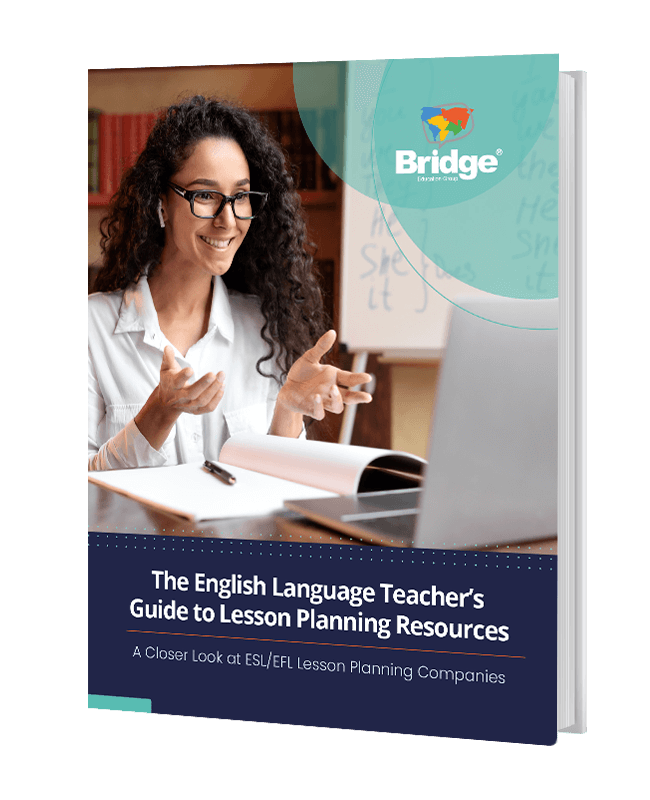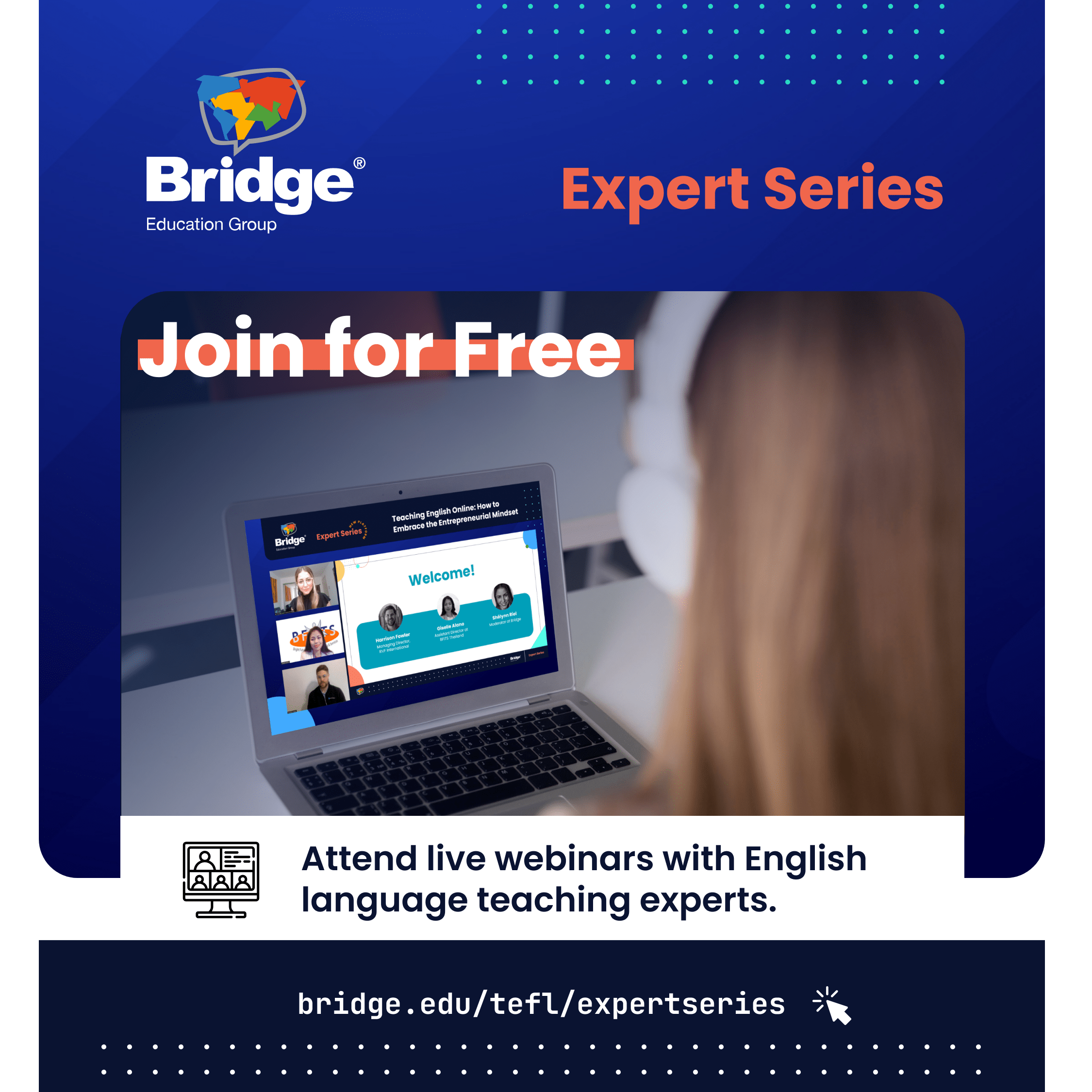Are you new to teaching English or facing the somewhat scary task of having to make your own ESL lesson plans? Are you unsure how to build a lesson around a topic that you want to teach? While there is no universally recognized recipe for how to create a TEFL/TESOL lesson plan, there are some important ingredients to include, like lesson objectives. Considering objectives in ESL lesson planning is essential if you want to deliver a useful and engaging lesson. We’ll show you exactly how to incorporate ESL learning objectives into your lesson plan!
If you’re new to teaching, you’ll want to get initial training and qualification with a TEFL certificate. You can explore our online TEFL courses to get started!
What are objectives in ESL lesson planning?
Objectives in ESL lesson planning are also known as lesson aims, student goals, learning goals, or learning objectives. Though the term varies depending on where you received your teacher training, the goal of objectives stays the same: defining a specific and measurable outcome of a lesson that is centered on your students’ achievement. Usually, a lesson should have not just one, but several ESL learning objectives that are linked to a certain time frame or task.

Why are objectives important in ESL lesson planning?
Your lesson objectives drive everything you do throughout your lesson. They can be the difference between an aimless lesson and one that intentionally brings students a step closer to meeting their language goals. Here are some reasons why ESL lesson objectives are important and how they can help you as a teacher:
- Defining objectives makes you examine your lesson content to ensure that there is an actual need for the topic you’re teaching and the activities you’re planning to do.
- Your class will run smoothly if you have a solid plan for how each lesson element fits into your overall teaching goal.
- Assessing student progress is easy by looking at whether or not the lesson objectives were met.
- You will be able to identify whether the lesson was a success and should be used with future students.
- Students will have a clear picture of what they should take away from the lesson and why the lesson is important if you share the objectives with them.
Kickstart your English language teaching career with
Professional TEFL/TESOL Certification
Get CertifiedHow do you write ESL learning objectives?
When you’re planning your lessons, the first step is to ask these questions to establish the lesson objectives:
- What am I teaching in this lesson?
- Why am I teaching it?
- What will the students be able to do by the end of this lesson?
- How will I know if the students have learned what I want to teach them? In other words, how will I measure the success of the lesson?
By answering these questions, your objectives will become clear. They will form the irreplaceable framework for your lesson.
What elements should an effective ESL lesson objective have?
There are three main elements that every lesson objective should include:
- Specific: ESL learning objectives should always be specific and relate to the main topic of your lesson. For example, if you are teaching the simple past tense, all lesson objectives should refer to the learning stages of studying the simple past tense.
- Measurable: ESL lesson objectives should be measurable. Your students need to produce language that clearly demonstrates their understanding of the lesson content. Think about what student actions you can observe to assess whether the lesson objectives have been met.
- Student-centered: Objectives in ESL lesson planning should be student-centered in order to be effective. In other words, what will the students be able to do?
Find the materials that will benefit your students the most with the free
ESL Teacher’s Guide to Lesson Planning Resources
downloadWhat are some good and bad examples of ESL lesson objectives?
To be effective, ESL lesson objectives should be specific, student-centered, and measurable. Here’s a comparison of objectives that do and don’t meet these criteria:
Weak lesson objectives (what to avoid)
- Too vague & unrelated to the lesson topic: Students will master the grammar point.
- Unquantifiable (no clear way to assess learning): By the end of the lesson, students will understand the past perfect.
- Teacher-centered (focused on what the teacher does, not the student): I’ll explain the passive voice by using a visual aid and a worksheet.
Strong lesson objectives (best practices)
- Specific & relevant to the lesson topic: Students will learn how to use the simple future to discuss upcoming plans.
- Measurable (includes a clear assessment method): By the end of the lesson, students will be able to write five sentences in the past perfect.
- Student-centered (focuses on what students will do): Students will identify verbs in the passive voice by underlining them in a text.

Putting all of the elements together
Now, let’s combine all the key elements into an effective ESL learning objective – one that is specific, student-centered, and measurable:
- By the end of the lesson, students will be able to use the modal “should” accurately in both speaking and writing when giving advice to a friend.
This objective is effective because:
- It’s specific: It focuses on the modal verb “should” and its function in giving advice.
- It’s student-centered: It describes what students will do, rather than what the teacher will explain.
- It’s measurable: Success can be assessed by observing students’ ability to correctly use “should” in both spoken and written contexts.
By following this structure, English teachers can create objectives that guide lesson planning and ensure students achieve meaningful progress.
ESL lesson plans can range from a few notes on the back of an envelope to full-blown works of art. They can be quick, last-minute ESL lesson plan outlines or so fully developed that a substitute teacher can walk in and complete the lesson without skipping a beat. As long as you’ve defined your ESL lesson objectives, your class has the potential to run smoothly and bring students one step closer to fluency!












